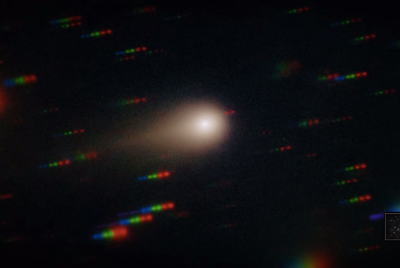3i/ Atlas Alien Theories Go On Overdrive As Elon Musk Shares His Views On Interstellar Object: 'It Could Be Aliens'
As 3I/ATLAS speeds towards its 19 December 2025 Earth flyby, NASA's forthcoming high-resolution images promise clearer answers

The discovery of the interstellar comet 3I/ATLAS on 1 July 2025 has propelled alien spaceship theories into the spotlight. And now, no less than Tesla CEO Elon Musk shared 'intriguing' comments on the interstellar visitor during a Joe Rogan Experience interview.
As the third confirmed visitor from another star system, following 1I/'Oumuamua and 2I/Borisov, its anomalous accelerations and lack of a visible tail have fuelled speculation among scientists and the public alike.
With Harvard's Avi Loeb highlighting potential extraterrestrial origins and Musk pondering catastrophic impacts, the cosmic enigma captivates a world hungry for interstellar secrets.
The Discovery and Peculiar Path of 3I/ATLAS
On 1 July 2025, astronomers at the Asteroid Terrestrial-impact Last Alert System spotted an object hurtling through our Solar System on an escape trajectory. Dubbed 3I/ATLAS, this Manhattan-sized interloper is the third confirmed interstellar visitor, after 2017's 1I/'Oumuamua and 2019's 2I/Borisov, potentially wandering alone for 10 billion years.
Its perihelion occurred on 30 October 2025, revealing unusual accelerations: a radial one of 1.1x10^{-6} au per day squared away from the Sun and a transverse of 3.7x10^{-7} au per day squared. Recent Hubble images from NASA show its growing ion tail, while a detected radio signal has puzzled observers, though confirmed as natural.
As it approaches Earth closest on 19 December 2025 at 270 million kilometres, telescopes worldwide track its every move, analysing its velocity of 57 km/s and dust cross-section of 230 km² for clues to its origins.
Elon Musk's Candid Insights on the Cosmic Intruder
SpaceX CEO Elon Musk addressed the frenzy surrounding 3I/ATLAS during a recent Joe Rogan podcast, dismissing outright alien spacecraft claims while acknowledging the object's eerie traits. 'No, there are definitely comets and asteroids which are primarily made of nickel,' he stated, countering suggestions of artificial origins. However, he did go ahead and say 'it could be alien, i don't know' - further fueling the 3i/Atlas alien theories.
Musk turned grave when discussing potential collision risks: 'It would like obliterate a continent type of thing,' adding, 'Maybe worse. Probably kill most of human life. If not all of us.' His remarks, shared widely on X, have amplified public discourse, with posts echoing the debate's intensity.
Elon Musk wades into 3I/ATLAS debate as Harvard scientist suggests ‘alien origin’: ‘It would obliterate a continent’ https://t.co/cNfDknex5q pic.twitter.com/qp2Vn1WFlY
— New York Post (@nypost) November 2, 2025
Musk's blend of scepticism and stark warnings underscores the dual nature of such discoveries—wondrous yet perilously unpredictable, especially given the object's escape trajectory and long solitary journey.
Alien Hypotheses Versus Hard Science
Harvard astrophysicist Avi Loeb has stoked alien theories by pointing to 3I/ATLAS's 'anomalies,' suggesting it 'might' be an extraterrestrial spacecraft amid its non-gravitational accelerations and absent tail. Public reaction has exploded, with online forums buzzing over radio signals detected from the comet, initially sparking extraterrestrial hopes before scientific analysis deemed them natural emissions.
However, experts rebut these claims robustly: 'Despite claims that 3I/ATLAS may be an alien spaceship, a growing body of observations reveals it's a natural comet,' as detailed in recent studies. This clash between imaginative speculation and empirical evidence highlights astronomy's thrilling tension, drawing in enthusiasts worldwide and prompting calls for advanced detection systems to monitor future interstellar intruders.
As 3I/ATLAS speeds towards its 19 December 2025 Earth flyby, NASA's forthcoming high-resolution images promise clearer answers. Whether a harbinger of alien contact or a mere icy relic, it reignites humanity's quest to comprehend the cosmos, urging greater vigilance against interstellar threats.
© Copyright IBTimes 2025. All rights reserved.




















